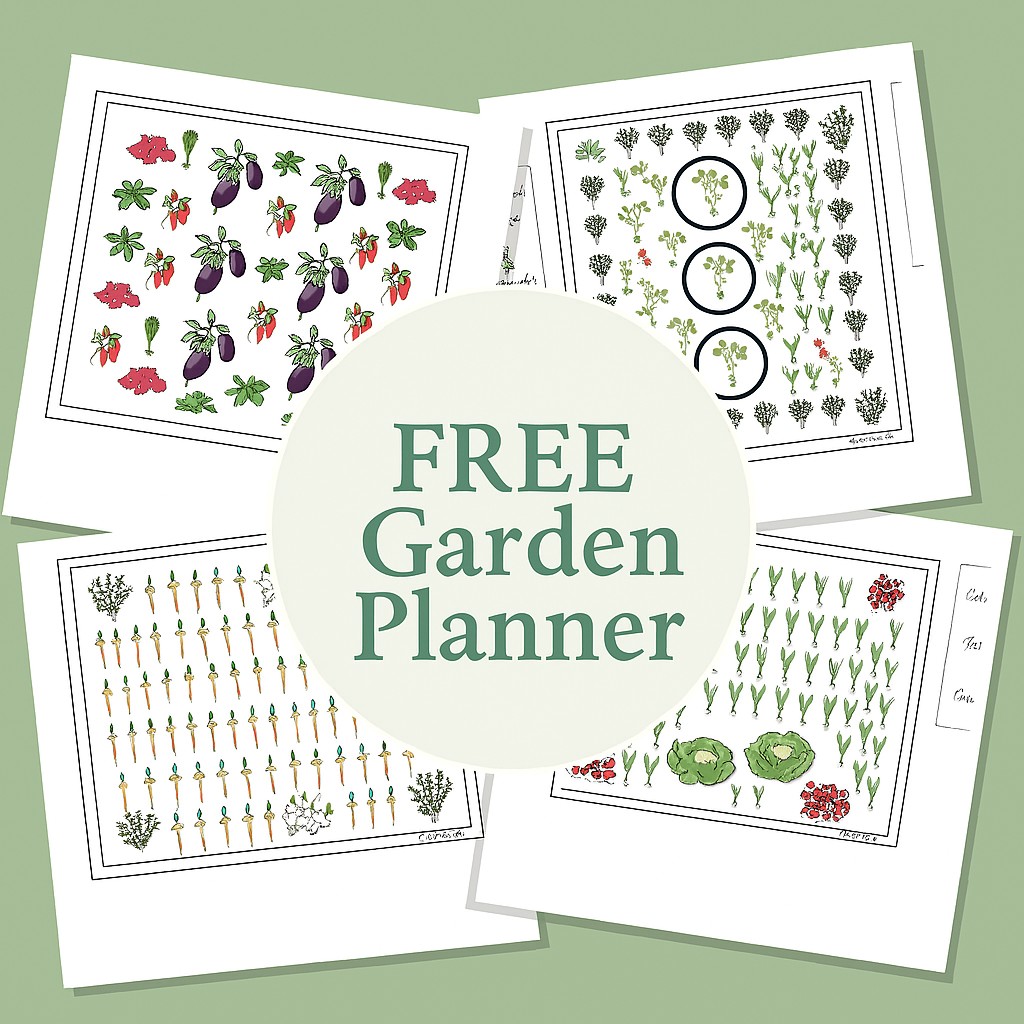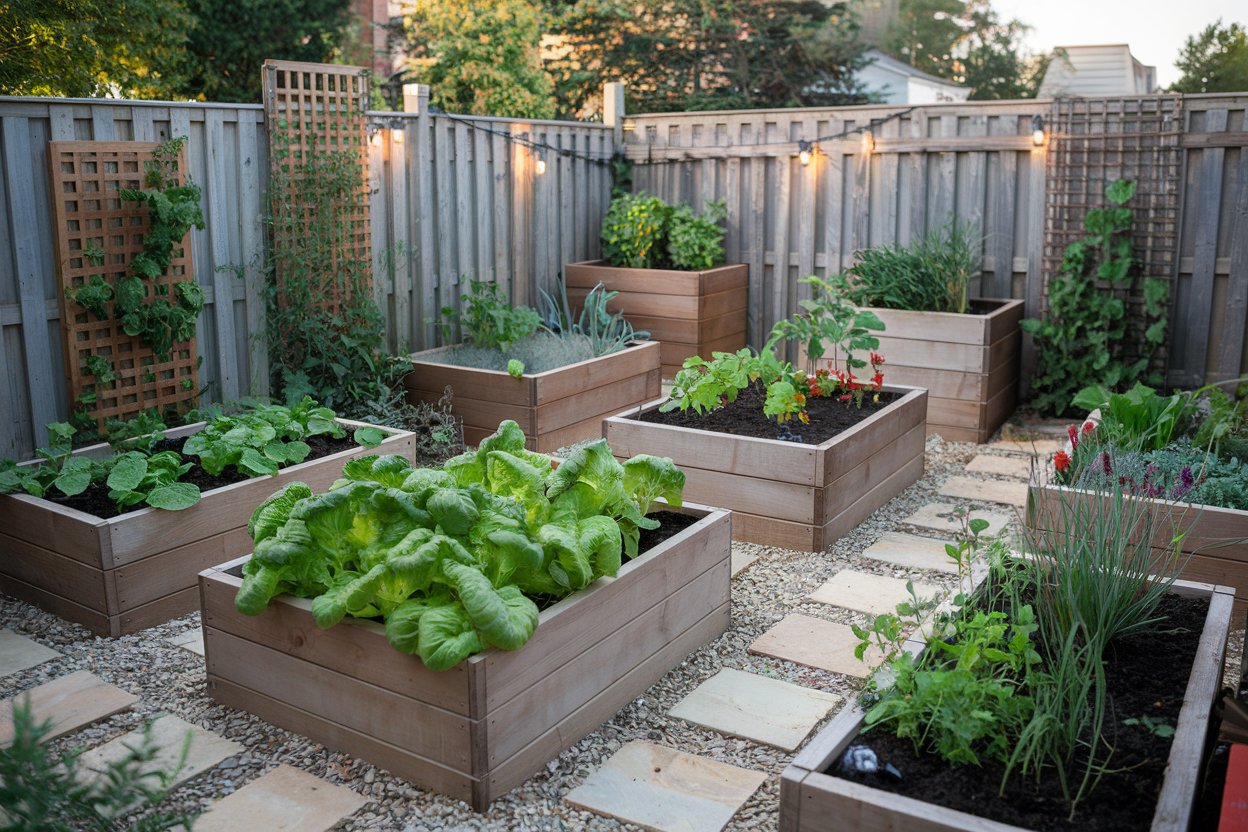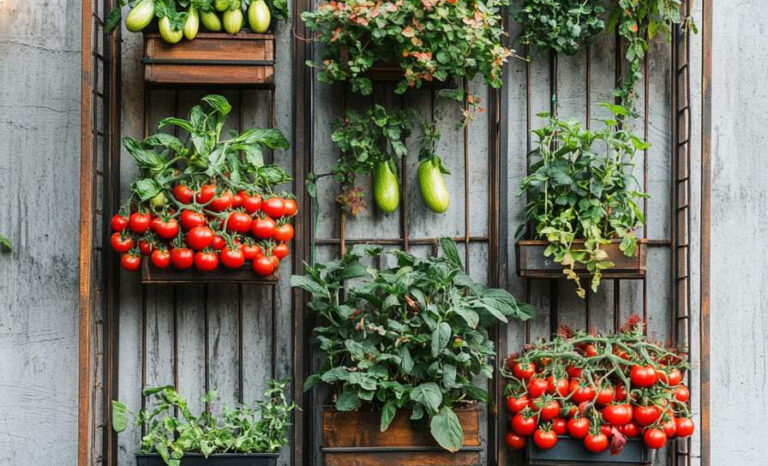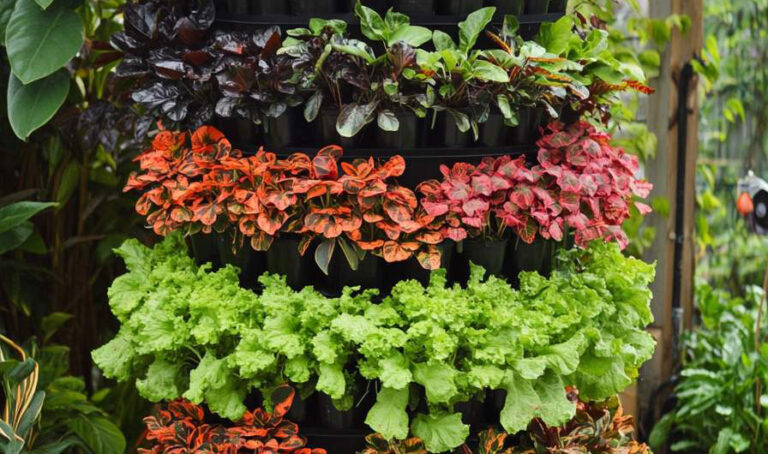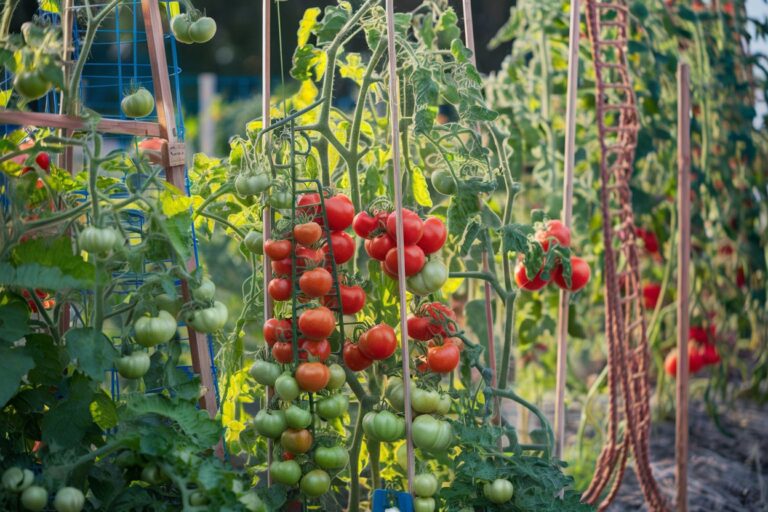How to Create an Awesome Veggie Garden Layout: Ideas for Raised Beds and Small Spaces
Have you ever wanted to grow your own fresh veggies but felt like you didn’t have enough space or didn’t know where to start? Designing a veggie garden that works well and looks good doesn’t have to be hard, even if you have a small garden. With some planning and creativity, you can have the veggie patch of your dreams! Let’s explore some ways to create the perfect veggie garden layout, focusing on raised garden beds and small spaces.
Veggie Garden Layout
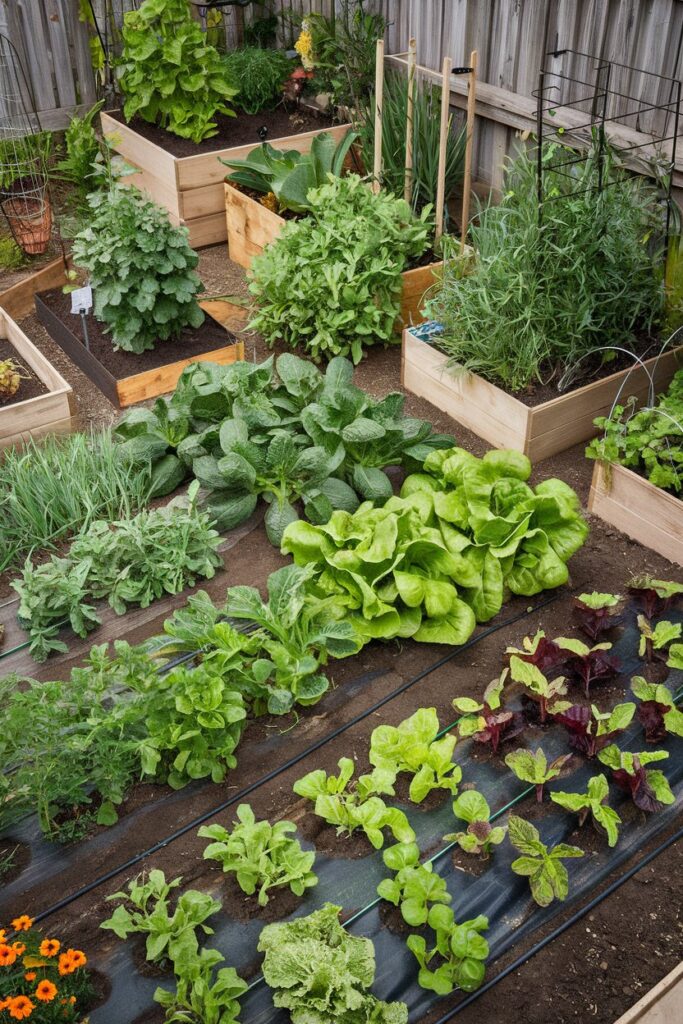
No matter if you have a small balcony, a big backyard, or something in between, planning your veggie garden layout is key to making the most of your space and getting a good harvest. A well-planned garden layout helps your veggies get enough sunlight, makes watering easier, and keeps everything organized.
When planning your veggie garden layout, think about these questions:
- Sunlight: Where does the sun shine on your garden the most during the day?
- Pathways: Are there clear paths to reach all areas of your garden?
- Companion Planting: Which plants grow well together, and which ones should be kept apart?
These questions will help you decide where to put your plants and how to shape your garden beds for the best results.
Raised Garden Beds Layout
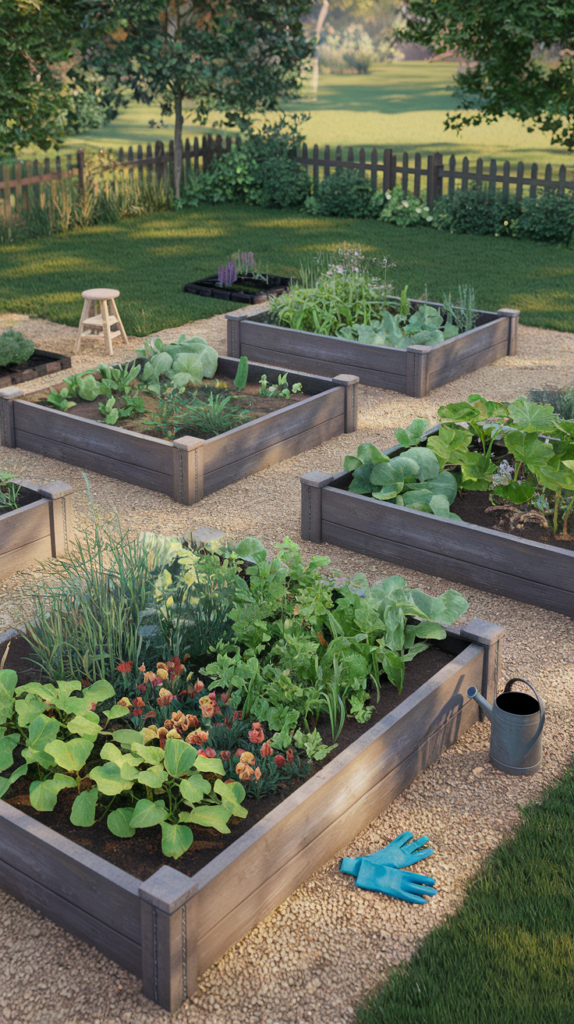
Raised garden beds are a great way to make your garden even better! Raised beds help keep your garden organized, improve drainage, prevent the soil from getting packed down, and make gardening more comfortable (say goodbye to back pain!).
Benefits of Raised Garden Beds Layout
- More Space: Raised garden beds let you grow more food in a smaller space, and they make it easier to control the soil quality.
- Easy to Use: Raised beds are easier for everyone to use, especially for people who have trouble bending or kneeling.
- Looks Great: Raised garden beds also make your garden look nice and organized.
To make the most of your raised garden beds layout, try using different sizes of beds to add variety. For example, taller beds can be used for root vegetables like carrots and beets, while shorter beds can be used for herbs and leafy greens.
Raised Garden Bed Layout Tips
- Pathways: Leave enough space between beds for easy movement—about 2-3 feet is a good idea.
- Crop Rotation: Rotate the crops in your raised beds each season to keep the soil healthy and reduce pests.
- Vertical Structures: Add trellises to your raised beds so climbing plants, like cucumbers and peas, can grow upwards and save space.
Garden Design Layout: Balancing Function and Beauty

The key to a successful garden is a well-thought-out garden design layout that works well and looks good. A good layout makes a big difference by placing plants in the right spots and making sure it’s easy to take care of everything.
Key Elements of a Successful Garden Design Layout
- Zones: Divide your garden into zones based on plant needs—for example, a sunny zone for tomatoes and a shady area for leafy greens.
- Plant Grouping: Group plants with similar watering and sunlight needs together to make care easier.
- Paths: Clear paths make it easier to care for your garden and make it look better. Use natural materials like stone or wood to keep a natural look.
A great garden layout doesn’t just focus on veggies. It should also include a space for relaxing—maybe a small bench or some stepping stones for kids to play on. This balance creates a beautiful and useful space that makes you happy all season long.
Small Garden Layout

If you have limited space, a small garden layout can still give you great results. The key is to use vertical space and smart planning to make the most of your garden.
Tips for Small Garden Layout
- Use Vertical Space: Grow vertically using hanging baskets, wall planters, or trellises to make more space for your plants.
- Succession Planting: Harvest a crop and then plant a new one in its place to keep your garden productive all year.
- Container Gardening: Pots and containers are great for small gardens. Herbs, tomatoes, and even some root veggies grow well in containers, making it easy to use whatever space you have.
Small Garden Layout Ideas
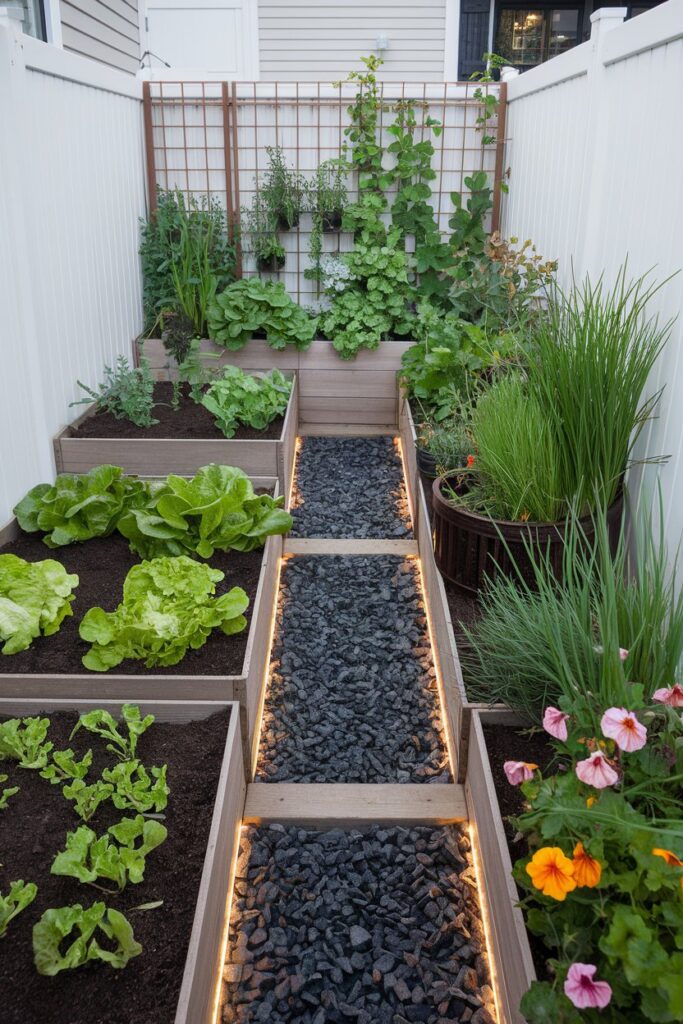
Try using a mix of raised garden beds and container gardens to make the most of a small space. You can also plant herbs or edible flowers along the edges of your garden to add color and fragrance while using every inch of your plot. Adding a trellis along a fence lets you grow climbing veggies like beans, which saves space and adds height to your small garden.
Designing the Perfect Garden Layout
Creating a veggie garden layout, whether it’s with raised garden beds, a small space, or a larger design, takes some planning. By following the ideas for good garden design, using raised beds well, and making the most of a small space, you’ll be on your way to enjoying fresh, homegrown veggies all season long.
Remember, every garden is different, and the best layout is the one that works for you and your space. Happy gardening!
